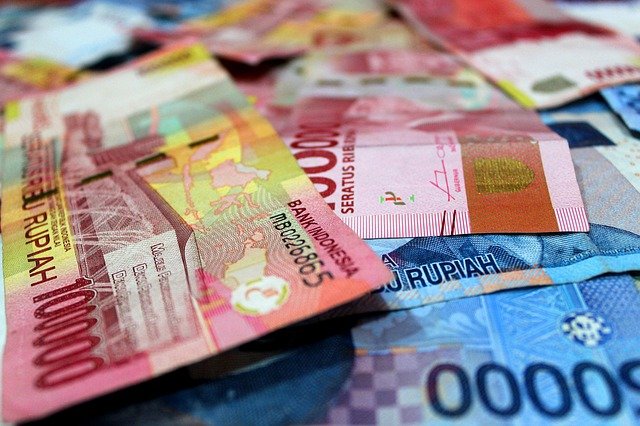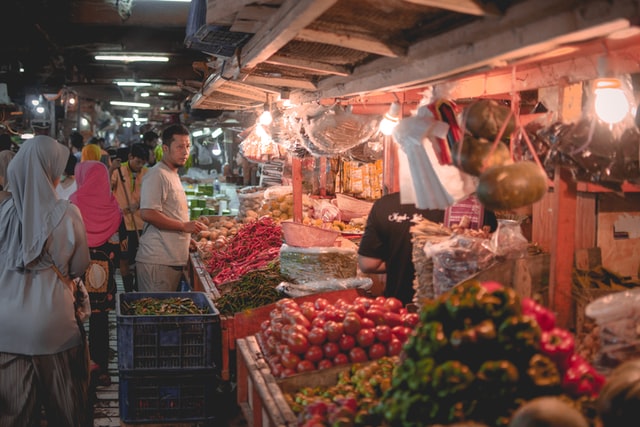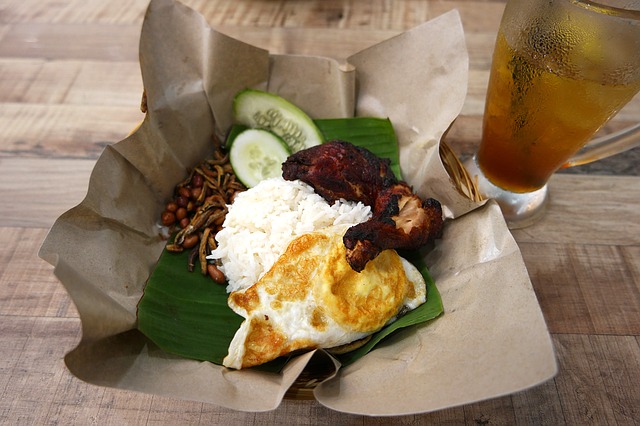Ways to Save Money for University Students
Moving to Jakarta as an international BINUS student is exciting – a new country, new culture, new friends, new life. Initial thoughts that come to mind is how different and interesting life is in Jakarta compared to life in Dublin, Ireland. The city is so big that it seems there is always something new to explore. It can, however, be nerve-wracking and daunting at first especially when everything is so new. One thing students face, however, is learning how to manage their income as they need to understand currency and cost of living differences compared with their home country. With limited money from parents/guardians, students need to be smart and careful about how they spend their money. This is why budgeting and discovering tips and tricks on how to save is important. This article will help students prepare before they move so they know what to expect when they get here and start life in Indonesia.
Get familiar with the Rupiah.
The Rupiah is Indonesia’s currency. It’s a short symbol in text is Rp and in currency exchange IDR. It uses large denomination/units of currencies, so, for example, the notes start at 1.000, 2.000, 5.000, 10.000, 20.000, 50.000 and 100.000. In a written format, the currencies are described with a ‘dot’ instead of a ‘comma’, so, for example, Rp5.000 (five thousand Rupiah) as opposed to €5,000 (five thousand Euros). The approximate exchange rate is €1 = Rp17.000 and $1 = Rp14.000.
On average I spend around Rp100.000 or less on food a day. I usually order food from delivery apps or eat out. However, I often check if there are any discounts before I order as I usually try to get my money’s worth.
Tips:
- Exchange money safely in banks and reputable money exchanges. There have been occasions that tourists and international students were short-changed by smaller back-street exchange bureaus, so if desperate and had to use them, please recount the money again before leaving the building.
- Use Google or www.xe.com to check exchange rates beforehand.
- When out, bring only enough for the daily spend to avoid overspending.
- Ensure there are enough smaller denomination notes in the wallet for service tips and transport.
Photo: Mohamad Trilaksono
Get familiar with the value of items.
The cost of living in Indonesia, although generally cheaper than the students’ home country, can be quite expensive for certain items, especially imported goods such as clothes, makeup and electronics. Living in Jakarta will also be more expensive than living in other Indonesian cities.
When it comes to shopping, I usually go to the thrift shop like the shops in Pasar Senen and try to haggle the price. Or shop for local Indonesian brands. However, Instagram has plenty of pages dedicated to thrift shops and local brands, so there isn’t even a need to leave the house anymore. Convenient in times of a pandemic, restrictions and lockdowns. These pages often sell second-hand clothes, wash and deliver these items at a considerably cheap price!
Tips:
- Research prices in advance to prepare for budgeting. Search for items in Tokopedia (available in English by changing settings at the bottom right corner of the page), Shopee, Gramedia (books).
- Use Google Translate to check descriptions in Indonesian.
- Once in Jakarta, visit with an Indonesian friend the traditional markets called ‘Pasar’ that will sell cheaper items. Haggling is normal and if done right, will cut a large chunk from the original asking price.
- Buy in bulk and search for discounts.
- Jakarta has an impressive amount of large scale shopping centres. Try not to overindulge as a lot of the imported items would be more expensive.
Photo: Fauzan
Get familiar with rental prices.
It is necessary to have accommodation booked before arriving in Indonesia for visa purposes and for peace of mind. Some may be fortunate to stay in the University accommodation or with family or friends; others may need to look for rented accommodation, homestays or lodgings (kos).
I stay in a kos which averages from Rp2-4 million a month depending on the plan. Finding kos a little further out can change the price significantly. However, if you do plan to do so, make sure it is close to somewhere that has good transport like the MRT.
Tips:
- First, book a stay of at least 2 weeks to a month to get familiar with the area and ensure that you are happy with your choice before committing to a longer stay. It gives you time to arrange viewings and look for accommodation elsewhere if not suitable.
- For shorter stays, sites like Airbnb, Booking.com, and Trivago are reputable and useful.
- Cheaper but more basic accommodation can be found through www.mamikos.com; www.sewakost.com; and www.kostjakarta.com. These are in Indonesian, so use Google Translate.
- Once happy with the area and accommodation, commit to a longer-term stay. Substantial discounts of 20% or more are often given for longer stays. This is where you can save money.
- When searching for accommodation, pay particular attention to cleaning services, security, shared bathrooms and kitchens, the mix of age, gender and people renting in the building.
- Use Google Maps Street View to look at the area surrounding the accommodation.
- Use Waze or Google Maps to check the distance by car or public transport from the accommodation to Binus and any other travel destinations.
Getting around in Jakarta.
Jakarta is a big city and traffic jams are a part of life. Moving around the city will need planning and patience. During the Pandemic and whilst studying at home, travelling should be minimised.
Motorbikes are my usual transport, as they’re the quickest and typically the cheaper option. However, when going to University, I use two modes of transport. Gojek/Grab motorbike and MRT. Since I live a bit far from an MRT station, I would use a Gojek/Grab motorbike to take me to the closest station. It would be the cheaper option rather than taking a car or motorbike all the way to FX.
Tips:
-
Download Gojek and/or Grab Apps. Grab and Gojek are like Uber and UberEats combined into one. A good feature about these apps is that they do have an English translation but knowledge of some common Indonesian phrases would be useful when using the App. There is not much difference between the two, just some have better daily discount deals and depend on the type of service e.g. some days it’s cheaper to use Gojek Motorbike and others GrabBike. A safety feature of the Apps is the location tracking capability which tracks the journey from pick up to drop off; giving the passenger security.
-
Rail travel: The MRT (Mass Rapid Transit) consists of 13 stations connecting Central to South Jakarta. Depending on where students live, and MRT is a cheap and easy way to travel to and from campus. The Senayan stop is close to the university. The charged fare for a trip on the MRT starts at Rp3,000, increasing by Rp1,000 for every station passed. A trip spanning the entire existing line in 2019 would cost passenger Rp14,000.
-
In addition to the MRT, there are other rail services that students can use to move around the city. A Map can be accessed here: http://www.urbanrail.net/as/id/jaka/jakarta.htm
-
Taxis are also available but can be more expensive as it uses meter reading (the price is not fixed like Gojek and Grab). It also does not have the location tracking safety feature. If a taxi must be used, opt for BlueBird taxis which are more reputable and safer.
-
Make sure to take into account travel time and possible traffic congestion when planning appointments or the time to be in class. It’s better to be early and have time to read up on study notes than be late.
-
In Jakarta, the Waze app shows a more accurate journey time than Google Maps. The user can also make comments in the app if something happens and is popular with younger users due to its trendy interface. Google Maps is more accurate outside of Jakarta.
-
Bring a Power Bank to charge mobile phones during the journey.
Eating out and eating in.
It is obviously cheaper to buy ingredients in the supermarket and cook at home. However, locally prepared Indonesian food can be very convenient, delicious, reasonably priced and a way to save money if the student knows where to go or where to order in. This will be useful to know if there are no cooking facilities or the shared kitchen is not suitable in the rented accommodation.
I normally order food for delivery rather than cooking so I focus on the Grab discounts options and try to order from there. If prices are still out of my budget, I would go around with my friend and try to find local food stands of Nasi Goreng or Ayam Penyet, Indonesian foods that are cheap but filling. Make sure you find stands that are talked about by the locals. If they are enjoying it, odds are you will enjoy it too.
Tips:
-
Download Grab & Gojek and navigate to their food takeaway section and start ordering from home. Cash payment is accepted, however, for better deals, use GoPay or Ovo. Either top up by using a bank account or top up at the local Indomaret/Alfamart. Say “Boleh top up Ovo/GoPay mbak/mas?” Then repeat your Indonesian number which is a combination of your Gojek/Grab number and your mobile phone number linked to the account & top-up.
-
Discover cheap restaurants like Warung and Warteg. In these types of restaurants, a meal of chicken, rice and vegetables can cost as little as Rp50.000 (almost €3/$3.50). In addition to being cheaper, eating in these types of places help local businesses and provide the student with a truly immersive experience of Indonesian culture. Warungs and Warteg are very common places for locals to meet and eat. Check, however, that the warung has good running water for cleaning utensils to avoid an upset stomach. Alternatively, bring a disposable box and cutlery or buy from a warung that serves food wrapped in banana leaves.
Photo: Ann San
Communications.
From the 15th of September 2020, a new policy came into effect for mobile phones brought into the country. With the exception of mobile phones used in Indonesia before the 18th of April 2020, users must register their phone’s IMEI number in a Ministry of Industry database in order to use an Indonesian SIM card. Import duty and taxes will also be payable. An Indonesian SIM is needed to use Ovo or GoPay.
Owning an Indonesian SIM has been the biggest convenience for me as I can access so many promos just by using Grab / Gojek in-app money. Additionally, if there’s a situation where I’m lost or need assistance but when my Indonesian is lacking, Google Translate is the biggest help!
Tips:
-
Turn off Data Roaming when in Indonesia if using an overseas phone and SIM. Use it only with wifi.
-
Buy a portable broadband wireless router (MiFi) with an Indonesian SIM card that acts as a mobile WiFi hotspot when on the go.
-
Use and register an older mobile phone handset if using an Indonesian SIM and reduce import duty and taxes.
-
That top-of-the-range new version is not essential.
Planning and budgeting.
It is easy to overspend in Jakarta. There are a lot of temptations, from the shopping attractions to the abundance of food choices. Do not feel disheartened if the first few months feels challenging. This is normal. Getting finances and spending under control will give the student peace of mind.
From my experience, having budgeting apps have helped a lot. I tend to overindulge myself with eating out so when I use these types of apps, it aids me with putting a limit on the amount I should spend a day.
Tips:
-
Start a budget plan from the Monthly Budget template when creating a New Sheet in Google Drive or if using Excel, create from either one of the budget templates: Personal monthly budget or Basic Personal Budget. Customise accordingly. Add the monthly allowance and estimated cost of living categorised into blocks such as Food, Clothing, Rent, Transport, etc.
-
Review weekly and add Actual expenditure.
-
Review at the end of the month and adjust the estimates up or down according to the spending trend. Try to stick to the budget.
-
Allocate 20% of the allowance towards savings for emergencies or unexpected expenses.




